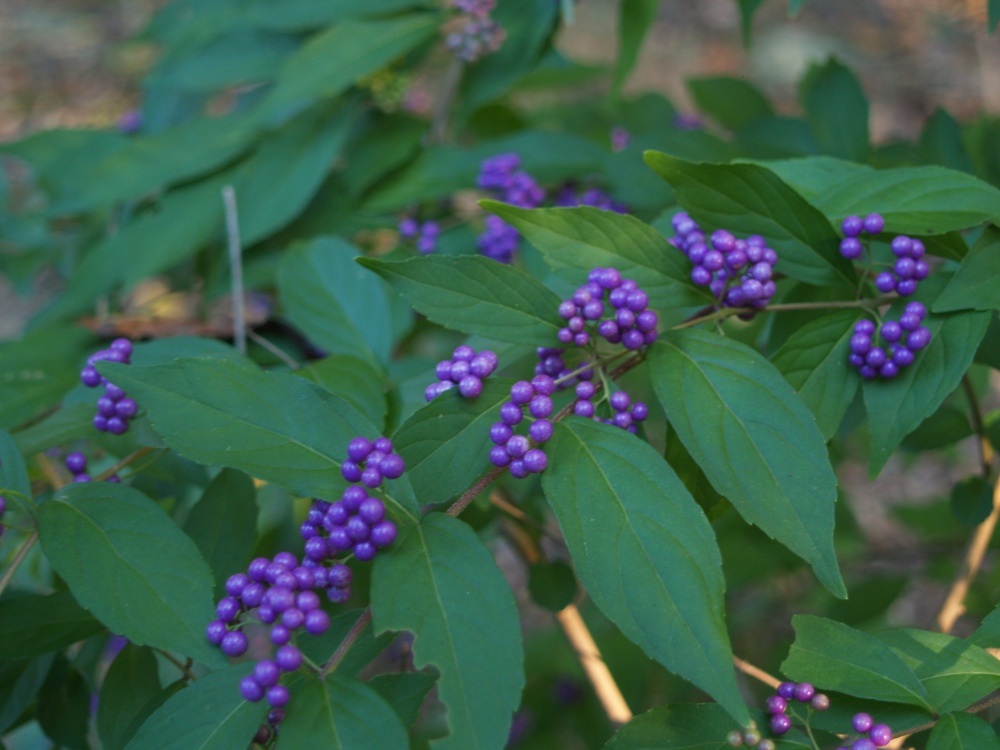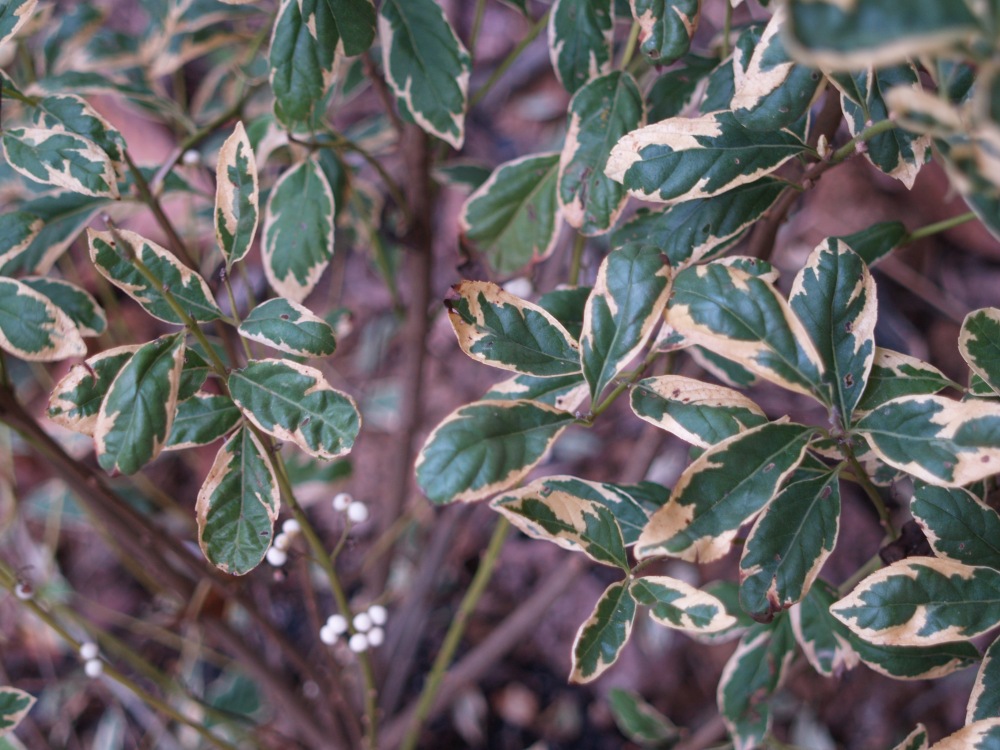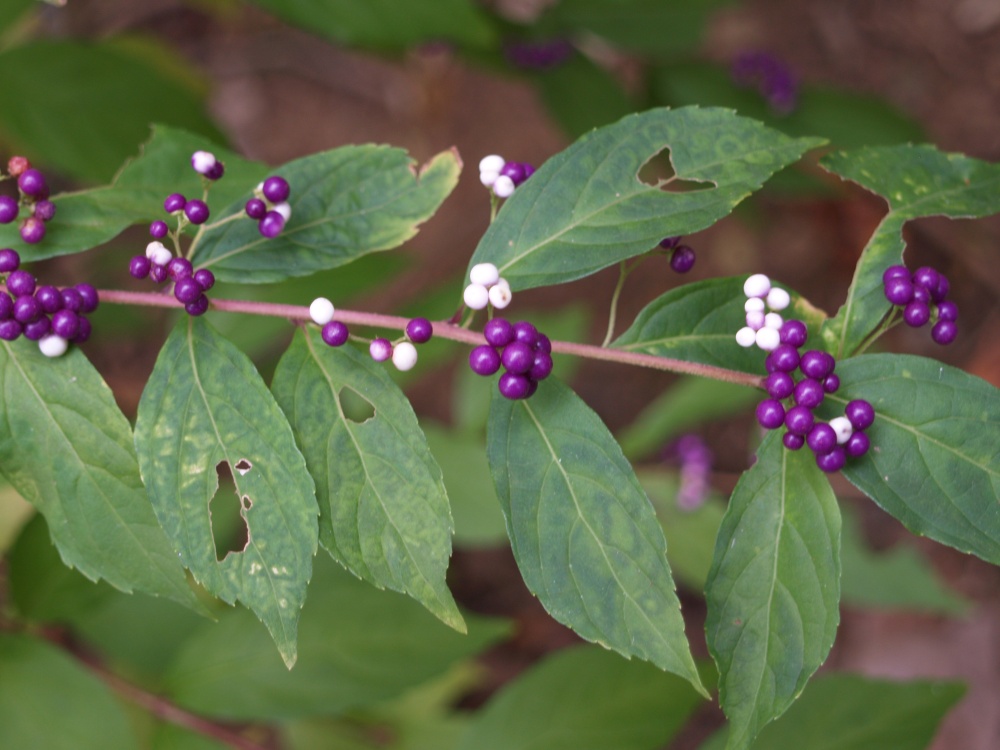 The purple beautyberries (Callicarpa dichotoma, above) berried heavily in the garden this year, while I’ve observed that fruits on white berried types were a bit more sparse. White berries on the variegated beautyberry ‘Duet’ (below) are barely seen, even with a heavy crop, due to the exceptional vigor that hides the small berries, and due to the lack of contrast with white variegation of the leaves.
The purple beautyberries (Callicarpa dichotoma, above) berried heavily in the garden this year, while I’ve observed that fruits on white berried types were a bit more sparse. White berries on the variegated beautyberry ‘Duet’ (below) are barely seen, even with a heavy crop, due to the exceptional vigor that hides the small berries, and due to the lack of contrast with white variegation of the leaves.
Still, I don’t hesitate to recommend any beautyberry, purple or white, as long as the gardener accepts that the shrub will be unremarkable for months until berries arrive in September. The arching habit of branches is particularly effective beside a pond, which is where I first noticed beautyberry years ago. But, even with five ponds in the garden, I have not managed to duplicate the effect.
Oddly, a single branch of one of the purple beautyberries has mixed purple and white berries, which I have not spotted in the past. Perhaps this occurs regularly, but it’s escaped my notice. Of course, I have no explanation for this, and I will be interested to see if berries on this branch are similarly colored a year from now. Certainly, there is an explanation, but while I am mildly curious about the science of why, I am delighted by what is.
Until this phenomenon is repeated late next summer there is no reason for further investigation, only the wonder that weather or other environmental conditions can cause odd variations in plants. If the mutation recurs a year from now, there is a greater likelihood that this is a genetic sport, and there’s some small measure of interest in taking cuttings to propagate the variation.
Is there are reason to think this has any appeal to other gardeners? Probably not. I don’t believe that this curiosity is more attractive than the purple or white berries alone, but there’s at least some value in oddities, if only that the gardener is able to brag that he has discovered the one and only, no matter how worthless it might be.
I would pick the white and purple over the only-purple any day. Keep an eye on it!
Hey, maybe you’ve discovered something very new here! I seem to recall that the Carol Mackie daphne got its name from just such a “sport” in the garden of Carol Mackie. It turned out to be hugely popular with its variegated leaves. I have one in my garden, and love the look of it.
I’ve seen many mutations over the years. Most are a result of weather, and are not duplicated the following year. Variegation, in particular, is often unstable, and prone to reverting back to green. For now, the berries are intriguing, curious enough that I’ll probably remember to check on them next year.